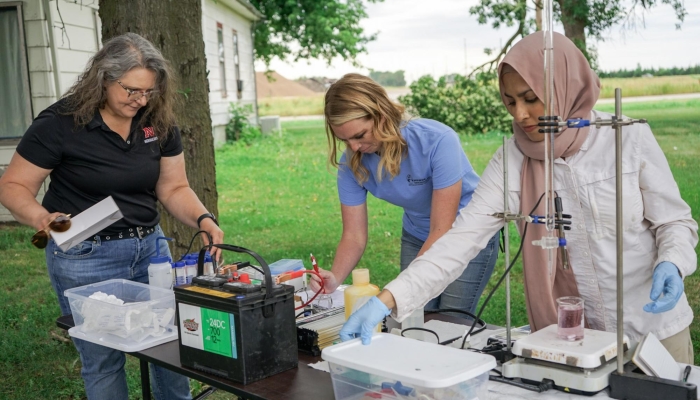Pediatric Cancer Study Looks for Possible Link to Common Water Contaminants
By Erinn Wilkins, NRD Water Technician
Why is the rate of cancer in children so high in Nebraska?
The Upper Big Blue NRD is partnering with the University of Nebraska Medical Center (UNMC) to conduct a groundwater quality study on domestic wells to see if elevated levels of common agricultural contaminants may be linked to pediatric cancer.
Nebraska is in the top seven states for rates of pediatric cancer in the US and is ranked first for incidence of certain malignant pediatric brain tumors. Researchers believe that the cause of pediatric cancers is likely to be a combination of genetic and environmental factors.
The Nebraska Cancer Registry has shown that between 1987 and 2016, 37 cases of pediatric cancer have been diagnosed within the Upper Big Blue NRD area. Could there be a link between these cases and water quality, the new study asks? Upper Big Blue NRD staff will collect samples from domestic wells in the district located close to where cases of pediatric cancer have been documented. The samples will be analyzed for nitrates, arsenic, atrazine, uranium, and uranium decay products. Due to season variability, samples will be collected in intervals over a two-year period. Samples will be collected in April/May (pre irrigation), June/July (during irrigation), and October/November (after irrigation). The goal is to sample 50 wells across the district that are located near known cases of pediatric cancer. Water quality information will be sent to the homeowner responsible for the well with an explanation of their results. If elevated levels of contaminants are detected, the participants will be provided with information about technologies for removing these compounds from drinking water.
At the conclusion of the study, location-based result maps will be generated to show where areas with high pediatric cancer incidence intersect with areas that have elevated agrochemical concentrations in drinking water. All data reported to the public will be aggregated, so that individual results cannot be tracked to a specific home, well, or family.
The findings from this research will allow for development of a comprehensive monitoring program for environmental contaminants in areas where elevated incidence rates for pediatric cancer have been documented. UNMC anticipates development of techniques that will enable them to draw preliminary conclusions about water quality and pediatric cancer. NRD staff will collaborate with UNMC researchers on the release of this information when the study is complete.
Resources


